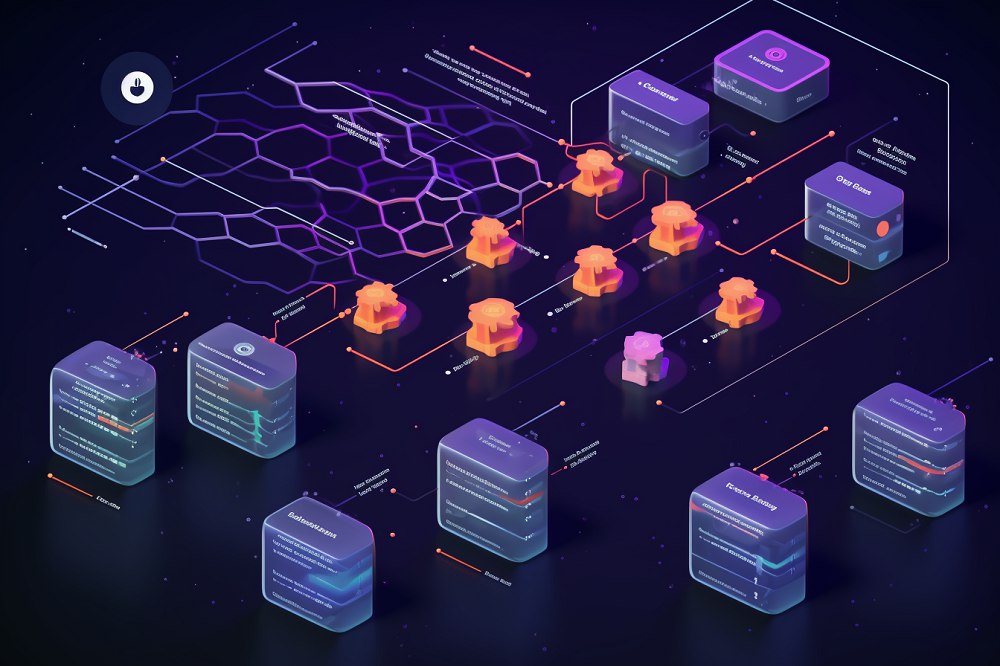Mainnet Explained
The leading blockchain network where authentic transactions occur and the governance token is utilized is referred to as a mainnet, an abbreviation for “main network.” Mainnet is not the same as testnets or trial platforms; it’s the result of all the efforts regarding development and is the functional core of a blockchain.
As the ecosystem’s main currency, it controls everything, like decision-making processes, staking, and how much transaction fees are charged. Before going live on the mainnet, blockchain systems usually go through testnet phases.
Developers can try new things in these test environments without using real cryptocurrency. A platform only moves from the testnet to the mainnet once it’s proven stable and fully functional.
Specific consensus methods, like proof-of-work (PoW) or proof-of-stake (PoS), are used on the mainnet to verify and approve transactions. Depending on the consensus method, the mainnet greatly depends on validators or miners.
In proof-of-work networks, miners solve complex math problems to verify transactions, add new blocks to the blockchain, and get paid in cryptocurrency. On the other hand, proof-of-stake (PoS) networks choose validators to make blocks based on their stake (the amount of crypto asset they own and are willing to put into the blockchain as security for the network’s operation and security).
Decentralization In Mainnet
Different blockchain networks have varying degrees of decentralization; more decentralization means more nodes are involved in the validation process. This makes approved transactions in the mainnet more secure and impossible to change.
Mainnets usually allow decentralized applications (DApps) and smart contracts, which make the network more valuable. Also, regular changes to main nets make improvements and security better all the time, which can sometimes cause forks. These forks can be soft ones that let changes work with older versions or hard ones that don’t fit in.
Crypto wallets are essential for users to connect with the mainnet easily. They make sending and receiving transactions quick and easy. Exchanges are also critical to the mainnet environment because they make it easy for people to access, buy, and sell native coins.
How Blockchain Mainnet Works
The mainnet of a blockchain platform consists of several vital parts that work together to keep the network’s distributed ledger secure.
Below are some of the most essential parts of a mainnet:
Blockchain Protocol
A different protocol for each blockchain controls how transactions are approved and added to the chain. For example, Ethereum and Bitcoin use their respective protocols.
Native Asset
Diverse network duties (participating in governance, rewarding validators, and paying transaction fees) are assigned a distinct crypto asset for each mainnet. For instance, Ether (ETH) is for Ethereum, while BTC is for Bitcoin.
Consensus Mechanism
Proof-of-work (PoW), proof-of-stake (PoS), and shared proof-of-stake eliminate double spending and make sure transactions are accurate.
Miners or Validators
Miners solve complicated riddles in PoW networks, while validators in PoS networks are chosen based on their crypto holdings and staking ability.
Smart Contracts
Many mainnets use smart contracts, self-executing agreements with coded conditions. They automate and enforce contract terms without intermediaries.
Decentralized Nodes and Decentralized Applications
Decentralized nodes make networks more secure, while Decentralized applications (DApps) on blockchains use smart contracts to create decentralized services, frequently incorporating the native coin and enhancing the mainnet.
Wallets
Safeguarding and managing cryptocurrency require wallets. These wallets store private keys and allow users to transfer, receive, and manage digital assets on the mainnet.
Importance Of Mainnet
Developers and users value the mainnet in blockchain because that’s where users can spend the native coin for various reasons or secure them. Although cryptocurrency wallets allow users to manage their holdings while participating with the main net, mainnet exchanges offer trade and liquidity, improving asset utility.
Development teams can test and deploy DApps and smart contracts on the mainnet. It shows the utility of their discoveries in real life rather than closed testing environments.
Mainnet decentralization and consensus processes offer a solid basis for secure and open applications. The mainnet drives blockchain ecosystem growth by hosting user engagement and innovation.
Mainnet Vs. Testnet
Testnets and mainnets are used for different objectives in blockchain development. Testnets are virtual networks that allow developers to debug, optimize code, and experiment with new features or apps without utilizing actual cryptocurrency, giving a risk-free environment.
In contrast, the mainnet is the blockchain network where cryptocurrency transactions occur. It’s a genuine experience with all the risks and rewards of using the blockchain in production.
Challenges Of Mainnet Deployment
Mainnet deployment is complex for blockchain developers. Smart contracts and DApps must be secure to protect users and their assets. Code audits and testing are needed to prevent financial losses or exploitation.
Another critical issue is scalability. As user usage rises, the network must process more transactions efficiently. Network architecture and consensus processes must balance scalability and decentralization.
Interoperability is difficult. A cohesive blockchain ecosystem requires a seamless connection with other decentralized platforms and external systems. Additionally, managing mainnet regulatory compliance is complicated by varied global legislative frameworks.
